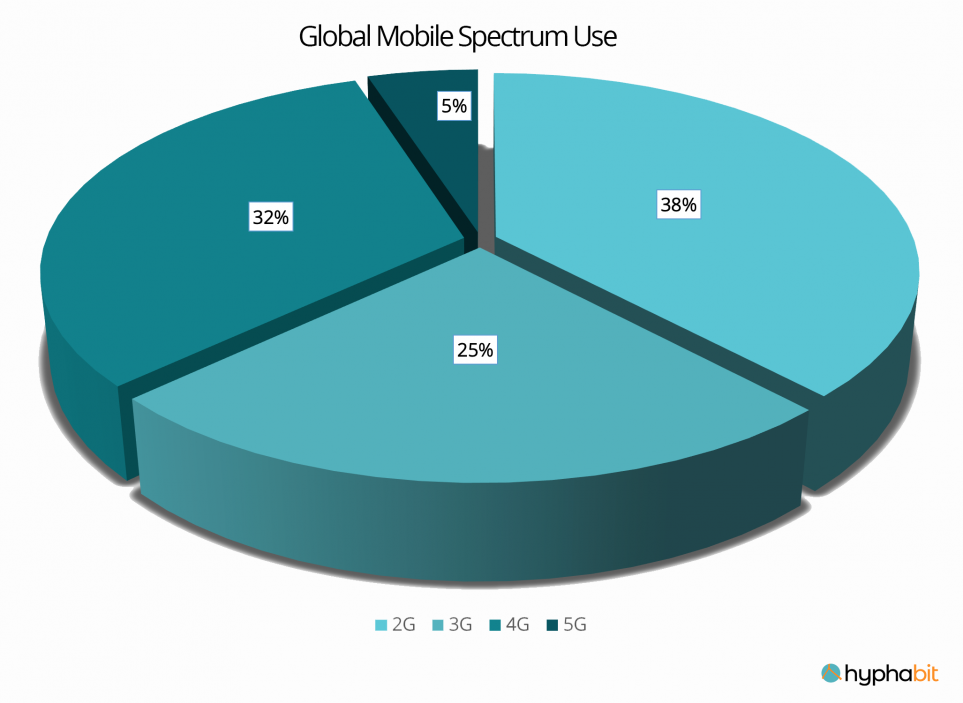With so much focus on 5G, it is interesting to see how mobile operators are currently using all of the spectrum they have won over the past 30 years.
Global Mobile Spectrum Usage
As a part of developing the knowledge base for our website, I looked at spectrum usage across the world. We decided this would be important to include as it would help our users understand what mobile services they had in countries they needed to operate in. Further to that, understanding the spectrum being used to offer those services could help decide on equipment choices – does the terminal support that frequency?
Having drawn the information together for the majority of countries and carriers I thought it would be interesting to see how spectrum was being allocated globally.
Still dominant globally, despite retirement fears
Two important characteristics of 2G
2G runs on spectrum that has two important characteristics. Firstly, it travels a long distance – that means it is very good at delivering coverage.
You need fewer cell sites to cover a larger area so it is ideal to get a network up and running. It also means it is far better for providing coverage in areas where there is a low population density – fewer cell sites to pay back.
Secondly, it good at getting through building walls – you use less power to reach the places people tend to make calls. 2G is still considered the best solution for voice – it is what it was designed for.
Low congestion on 2G networks
Given that many networks have historically relied on 2G for their geographic reach it may account for the reason it is still in place – and the reluctance to remove it. This is good news for IoT as many applications will run well on 2G and be able to trade on widespread availability. As 2G only devices have dwindled over the past 10 years it is also likely that the risk of congestion on 2G networks is close to zero. 2-4G devices will still drop back to 2G for voice where needed, but it is hard to imagine this has a significant impact.
Keep up-to-date with 2G retirement dates
The ever-changing picture on 2G retirement was another reason for gathering the information. When deploying an IoT solution we want you to be able to understand not only whether the service is available where you need it, but has a sunset notice been issued, and if so, how long until retirement. As 3G, using a further 25% of global spectrum, retirements are happening now too this will be a growing requirement. With 63% of the global spectrum in use tied up providing 2 or 3G, the implications of understanding potential retirement plans is crucial. Once we have the information marshalled in a user-friendly form we will be adding it to our site, so please keep checking back.
In the meantime read more on how the 2G network closure in the UK may affect your IoT deployment.
Share this Post


